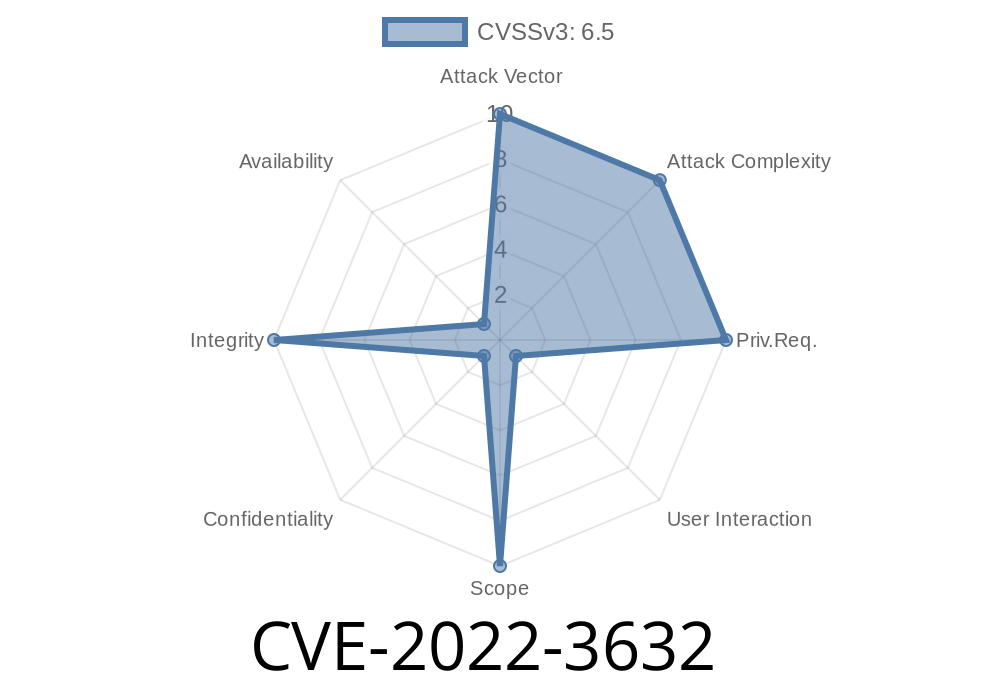It's time for a deep dive into the world of cybersecurity, focusing on a potentially critical vulnerability in a popular WordPress plugin. CVE-2022-3632 highlights the lack of Cross-Site Request Forgery (CSRF) checks in some places of the OAuth Client by DigitalPixies WordPress plugin through 1.1.. This vulnerability could allow an attacker to make logged-in users perform unwanted actions.
In this long read, we'll go through what the vulnerability is about, including details on the affected plugin, code snippets showcasing the issue, links to original references, and a discussion of the potential exploit.
What is the OAuth Client by DigitalPixies WordPress Plugin?
The OAuth Client by DigitalPixies WordPress plugin enables website administrators to authenticate users through widely popular social platforms like Google and Facebook, rendering the login process more user-friendly and secure. The plugin is a top choice for many business websites, blogs, and e-commerce platforms.
Affected Version: Through 1.1.
CVE-2022-3632 has been found to affect the OAuth Client plugin versions up to and including 1.1.. To secure your website and user information, it is essential to update the plugin immediately if you are using a vulnerable version.
What is CSRF and Why It Matters?
Cross-Site Request Forgery (CSRF) is a cyber-attack that tricks an authenticated user into performing an unwanted action on a website without their consent. For instance, an attacker might intercept a user's login request and use that session to execute additional unauthorized actions, like changing the profile details or executing a transaction.
The primary concern with CSRF attacks is that the attacker can perform these malicious actions without the user being aware of it, jeopardizing the security of both user data and the website.
Code Snippet Showcasing the Vulnerable Plugin
The following is an example of vulnerable code in the OAuth Client plugin that does not have CSRF checks in place:
function oauth_login() {
if (isset($_POST['login_button'])) {
// ... Login code, without CSRF check
}
// Other code...
}
add_action('init', 'oauth_login');
In this example, the oauth_login function handles the login process when a user clicks the login_button. However, it does not implement any CSRF checks, making it vulnerable to CSRF attacks.
Refer to the following link for an in-depth look at the complete plugin code
OAuth Client by DigitalPixies GitHub Repository
In practice, an attacker could exploit this CSRF vulnerability in one of the following ways
1. Crafting a malicious link, embedding it in an email or a message, and sending it to the target user. If the user clicks on the link while being logged in to the vulnerable website, the attacker could intercept the user's session and perform unauthorized actions.
2. Creating a malicious website or ad that sends unauthorized requests to the target website, exploiting the same vulnerability.
If successful, the attacker could perform various malicious actions, like resetting the user's password, unauthorized access to user accounts, or even tampering with the website's content or functionalities.
For more details on the CVE-2022-3632 vulnerability, refer to the original references
1. CVE-2022-3632 – NIST National Vulnerability Database
2. WordPress Security Release – WordPress Blog
Conclusion
CVE-2022-3632 is a critical security vulnerability in the OAuth Client by DigitalPixies WordPress plugin through 1.1.. This flaw allows attackers to exploit CSRF mechanisms, posing severe privacy and security concerns. Website administrators must ensure their plugins are up-to-date and implement appropriate CSRF checks to safeguard their users and website integrity.
Timeline
Published on: 11/14/2022 15:15:00 UTC
Last modified on: 11/16/2022 20:56:00 UTC
